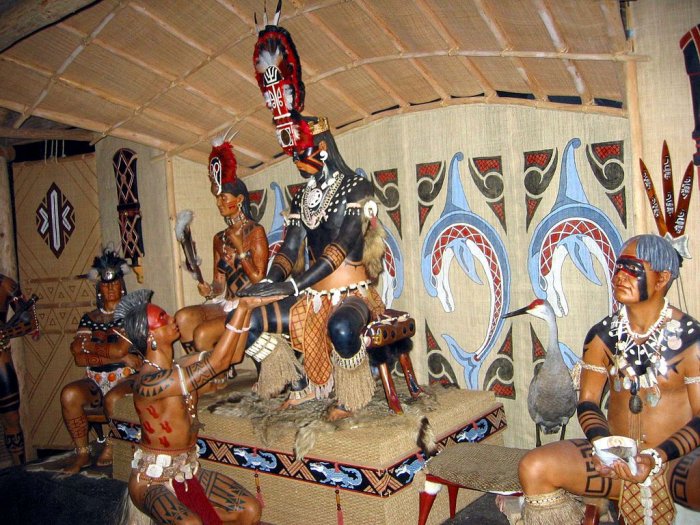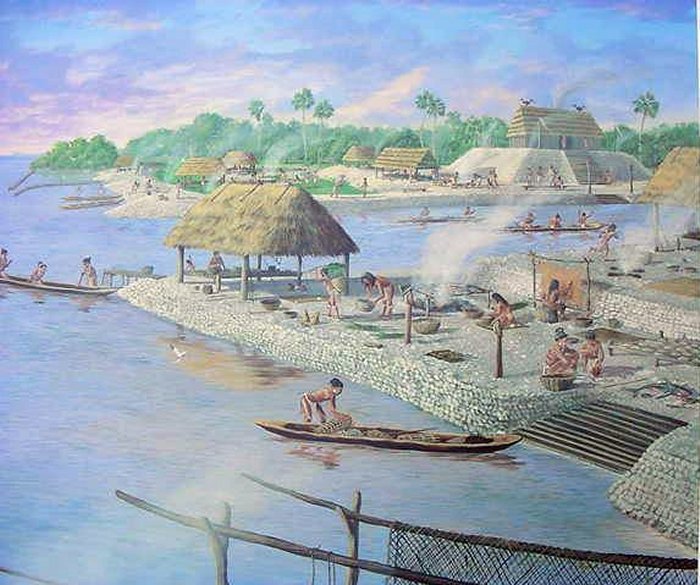MessageToEagle.com – The Calusa, known as the Shell Indians lived on the sandy shores of the southwest coast of Florida. Calusa means “fierce people,” and they were war-like people.
What is truly special about the Calusa is that they were piling shells into massive heaps to construct their own water-bound towns, which is also the reason why we call them the Shell Indians.
These shell constructions are visible on one island in particular, known as Mound Key. It was the capital of the Calusa kingdom when Spanish explorers first set foot in the area.
Now, scientists are slowly unraveling the secrets of the mysterious kingdom of Calusa and the Shell Indians. Mound Key was primarily constructed of heaps of shells, bones and other discarded objects known as midden. The Indians had a good reason for using shells!
University of Georgia anthropologist Victor Thompson has unearthed information on how the composition of Mound Key, located in Estero Bay adjacent to Fort Myers Beach in Florida along the Gulf of Mexico, changed over the centuries in relation to both environmental and social shifts.

This study shows peoples’ adaptation to the coastal waters of Florida, that they were able to do it in such a way that supported a large population,” said Thompson, an associate professor of anthropology in UGA’s Franklin College of Arts and Sciences and the director of the Center for Archaeological Sciences. “The Calusa were an incredibly complex group of fisher-gatherer-hunters who had an ability to engineer landscapes. Basically, they were terraforming.
“China creates islands. Dubai creates islands. The Calusa created islands.”
“If you look at the island, there’s symmetry to it, with the tallest mounds being almost 10 meters high (or 32 feet) above modern sea level,” Thompson said. “You’re talking hundreds of millions of shells. … Once they’ve amassed a significant amount of deposits, then they rework them. They reshape them.”

Thompson speculates that the island was occupied early in its existence and midden accumulated as simply the result of daily subsistence. During periods of cooler temperatures when the sea level lowered and fish were scarce, the Calusa abandoned the island. Once climatic conditions and fishing became productive again, they reoccupied Mound Key.
Its second occupation is associated with large-scale labor projects that ultimately gave the island its final shape. All this work appears to have been supported largely by fishing–and possibly the storage of the live surpluses of those aquatic harvests.
“One of the really fascinating things is that we have historic documents from the Spanish on what it was like there, the buildings and interactions that people had in the 1500s and 1600s,” Thompson said. “Even though it was a relatively brief moment in time, to be able to walk around the island and envision those kinds of things happening, that’s one aspect that I find extremely interesting.”
See also:
Luna Settlement: First Multi-Year European Settlement Identified In Pensacola, Florida
Ancient Floridians Re-Buried Their Relatives Due To Rising Seas – New Archaeological Evidence
Pineland was the second largest of the Calusa towns when the Spaniards arrived. The Calusa lived on top of high midden-mounds, engineered canals and water storage facilities, and traded widely while developing a complex and artistic society.
The Calusa tribe died out in the late 1700s when enemy Indian tribes from Georgia and South Carolina began raiding the Calusa territory. Many Calusa were captured and sold as slaves.
MessageToEagle.com






